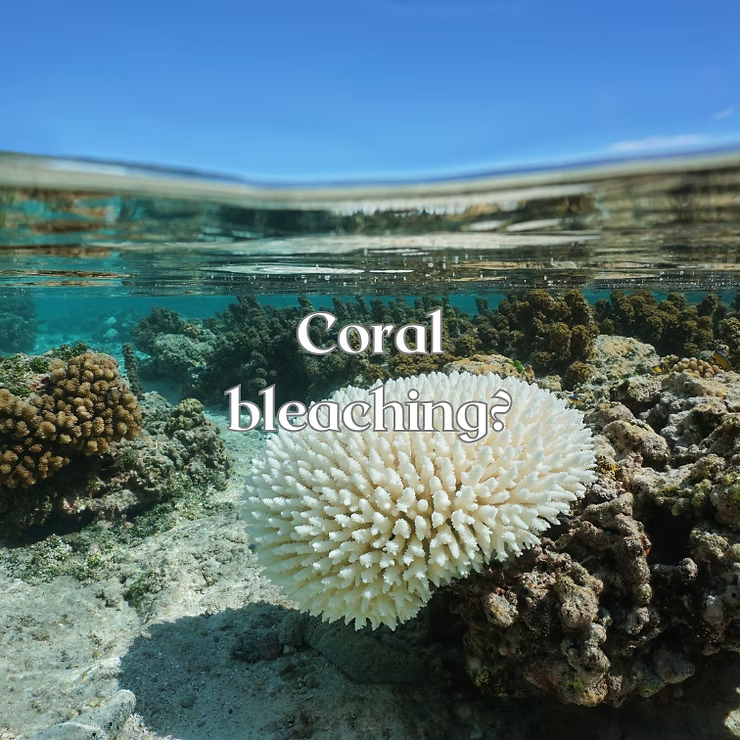Understanding Coral Bleaching
Coral bleaching occurs when reefs lose their vibrant colors and turn white due to stress. This phenomenon is primarily triggered by rising ocean temperatures, pollution and runoff, and ocean acidification. The impacts are far-reaching, threatening biodiversity, local economies, and the long-term survival of coral ecosystems. Despite these challenges, solutions exist through prevention and recovery initiatives that can help safeguard coral reefs for future generations.
Main Causes of Coral Bleaching
Rising Ocean Temperatures
Warmer waters disrupt the relationship between corals and algae. When temperatures climb too high, corals expel the algae living within their tissues, leaving them pale and vulnerable to disease. This process reduces coral resilience and often leads to mass bleaching events.
Pollution and Runoff
Pollutants from agriculture, sewage, and coastal development enter the ocean through runoff. Excess chemicals and sediment harm coral health, block sunlight, and upset the balance of nutrients. Sustainable land use, proper waste management, and buffer zones can reduce these risks.
Ocean Acidification
The absorption of carbon dioxide makes seawater more acidic, weakening corals’ calcium carbonate skeletons. This reduces their ability to recover from bleaching. Transitioning to renewable energy and lowering emissions are vital to limit further acidification.
Effects of Coral Bleaching
Loss of Biodiversity
Coral reefs shelter approximately a quarter of all marine species. When reefs bleach, fish, crustaceans, mollusks, and turtles lose critical habitat, disrupting the balance of marine ecosystems.
Economic Impact
Reef degradation affects tourism, fishing, and coastal economies. Bleached reefs discourage divers and snorkelers, while reduced fish stocks harm local livelihoods dependent on marine resources.
Threat to Reef Survival
Without intervention, entire coral colonies may collapse. Pollution, warming, and acidification together intensify this decline, threatening the future of reefs worldwide.
Preventing Coral Bleaching
- Reduce Carbon Emissions: Shift to renewable energy, promote energy efficiency, and support reforestation.
- Protect Coral Reefs: Establish marine protected areas, enforce sustainable fishing, and restore damaged reefs.
- Promote Sustainable Tourism: Encourage reef-safe sunscreen, avoid touching corals, and support eco-friendly businesses.
Recovering Coral Reefs
Coral Restoration
Techniques like coral gardening and artificial reef creation help rebuild damaged ecosystems. Community participation increases long-term success.
Marine Protected Areas
Designated safe zones limit harmful activities, allowing corals and marine life to regenerate naturally while supporting fisheries and eco-tourism.
Community Involvement
Local communities can lead reef monitoring, cleanups, and conservation education. Empowering residents strengthens long-term stewardship of coral ecosystems.
The Importance of Coral Reefs
Habitat for Marine Life
Reefs are often called “rainforests of the sea” because they host immense biodiversity. They provide food, shelter, and breeding grounds for countless species.
Protection from Storms
The complex structures of reefs absorb wave energy, reducing erosion and storm damage to coastlines. Healthy reefs act as natural storm barriers.
Tourism and Recreation
Reefs attract millions of visitors annually. Diving, snorkeling, and coastal tourism generate significant income for communities while connecting people to marine ecosystems.
Conclusion
Coral bleaching is a pressing environmental challenge, but solutions are within reach. Reducing emissions, managing pollution, and encouraging sustainable tourism can slow bleaching. At the same time, restoration efforts, protected areas, and community involvement can accelerate recovery. Coral reefs are vital for biodiversity, coastal protection, and economic wellbeing. Protecting them is not only a scientific necessity but also a shared responsibility for the future of our oceans.

